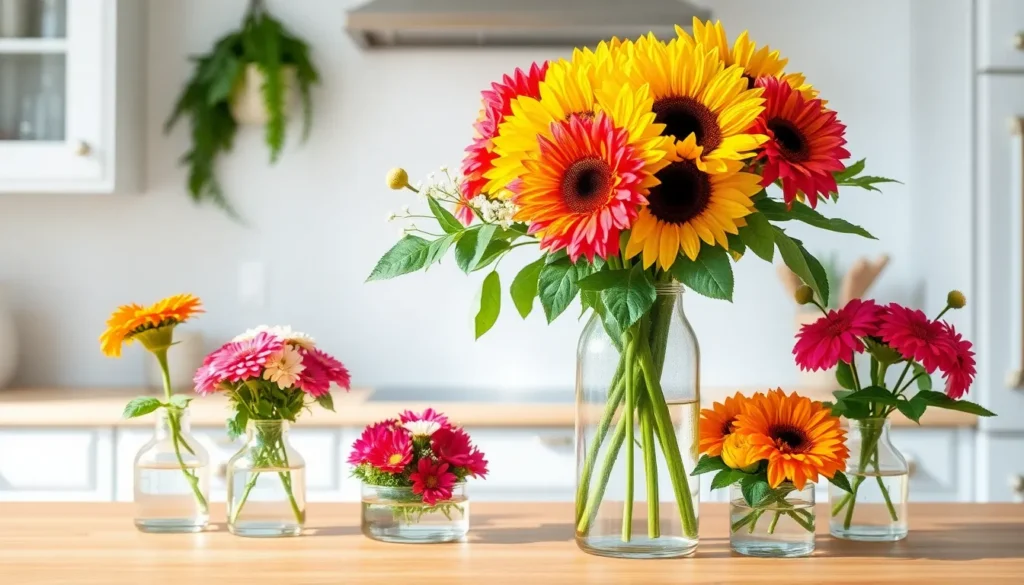Welcome to the vibrant world of flower arrangements, where even the most inexperienced gardener can transform a humble handful of blooms into a captivating masterpiece. Whether you’re a novice just discovering the joy of gardening or a seasoned horticulturist looking to expand your creative skills, flower arranging offers a unique blend of artistry and nature. The beauty of this craft lies in its simplicity and accessibility, allowing anyone to bring a touch of elegance and color into their home.
Creating stunning flower arrangements is not just about aesthetics—it’s a delightful way to connect with the natural world and enhance your gardening experience. With a few basic principles and a dash of creativity, you’ll soon find yourself experimenting with different textures, colors, and forms to produce arrangements that reflect your personal style. This article will guide you through the essentials, from selecting the right flowers and foliage to mastering simple techniques that will elevate your arrangements from ordinary to extraordinary.
As we journey together through the basics of flower arranging, you’ll discover the joy of playing with different floral combinations and the satisfaction of crafting something uniquely your own. You’ll learn how to choose flowers that complement one another, incorporate greenery effectively, and extend the life of your arrangements with simple care tips. So, grab your shears and a vase, and let’s embark on this colorful adventure that promises to enrich your gardening journey and brighten your living space.
Choosing Beginner-Friendly Flowers
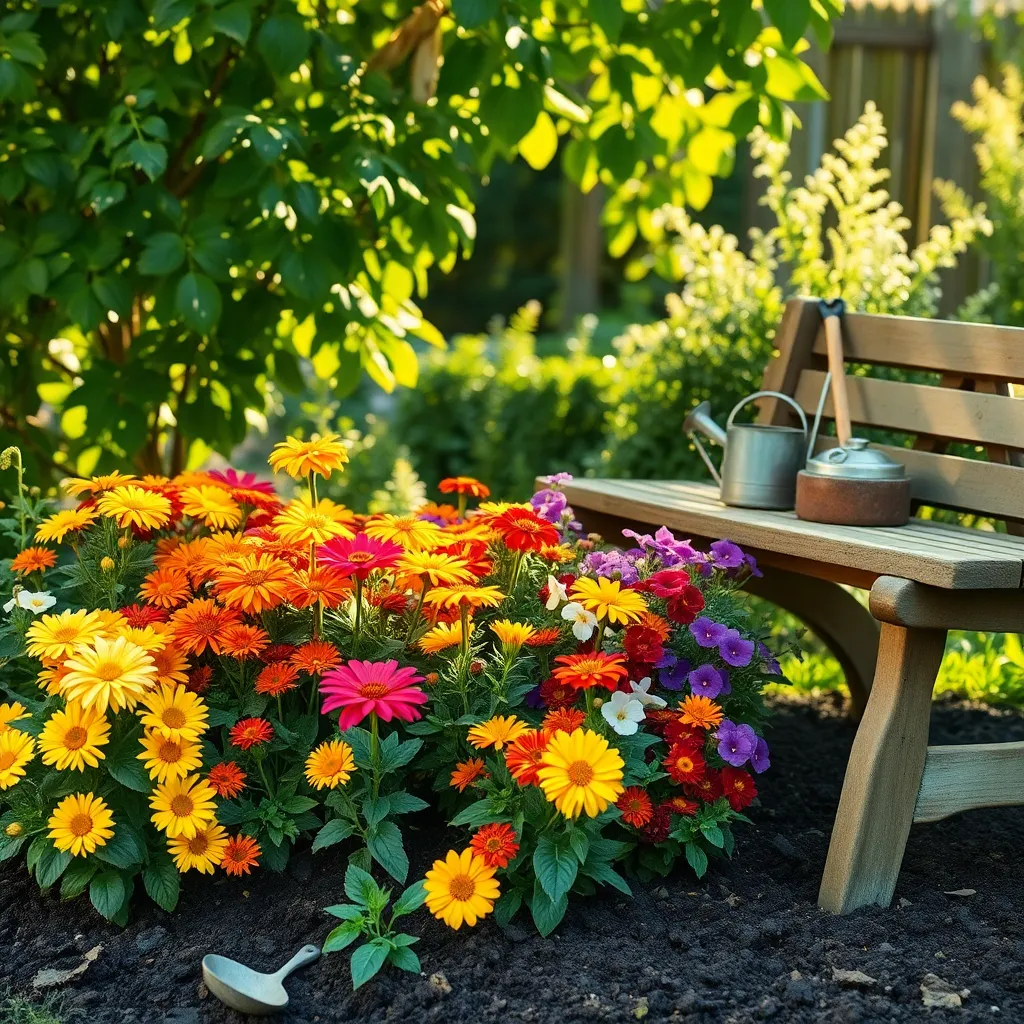
Starting with beginner-friendly flowers can make your gardening journey both successful and enjoyable. One excellent choice is the marigold, which is known for its vibrant color and low maintenance requirements.
Marigolds thrive in full sun and are adaptable to a variety of soil types, though they prefer well-drained soil. To ensure healthy growth, water them moderately, allowing the soil to dry between watering sessions to prevent root rot.
An additional beginner-friendly option is the zinnia, which is beloved for its bright blooms and ease of care. Zinnias flourish in warm climates, and they require minimal attention, making them perfect for novice gardeners.
Plant zinnias in an area that receives plenty of sunlight, and use a soil mix that’s rich in organic matter for the best results. Fertilize lightly during the growing season, and deadhead spent flowers to encourage continuous blooming.
For those who want to explore more, consider planting sunflowers, which are both striking and simple to grow. Sunflowers need a site with full sun and slightly acidic to neutral soil, making them versatile additions to many garden types.
Once established, sunflowers are drought-tolerant, but they do benefit from regular watering in prolonged dry spells. Stake tall varieties to prevent them from toppling over, especially in windy conditions, ensuring they remain a stunning focal point in your garden.
Basic Tools for Arranging Flowers
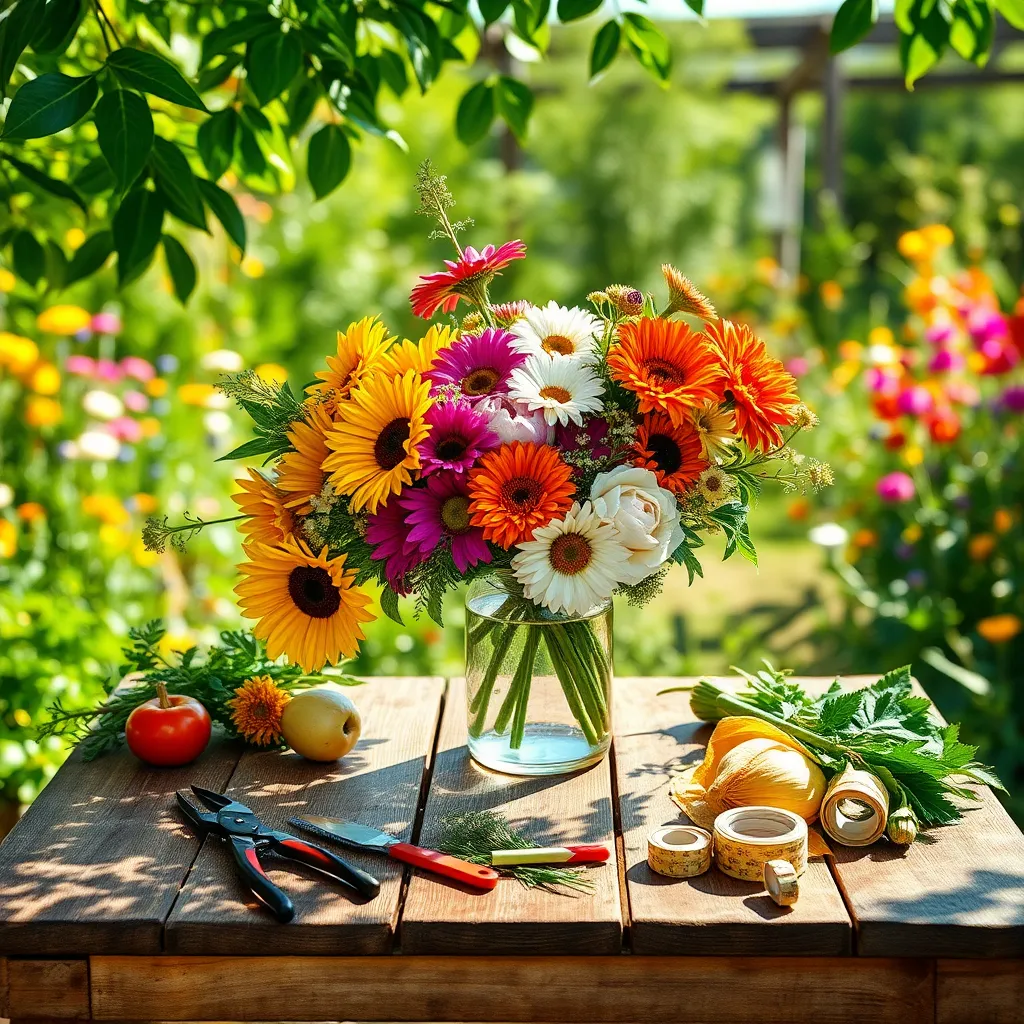
To create stunning flower arrangements, having the right tools is essential. Start with a pair of sharp, clean floral scissors or pruners to neatly trim stems and remove thorns.
Floral foam is a handy tool for beginners, as it helps to secure flowers in place while keeping them hydrated. When using floral foam, soak it thoroughly in water before inserting your flower stems for better longevity.
Consider investing in a variety of vases and containers to suit different arrangements, from tall and elegant to wide and low. Match the vase size with the flower type; for instance, tall vases work well with long-stemmed flowers like lilies.
A floral tape or wire can be extremely helpful in holding stems together and creating more structured designs. Use these tools to experiment with more complex arrangements, such as wreaths or garlands.
Simple Techniques for Stunning Displays
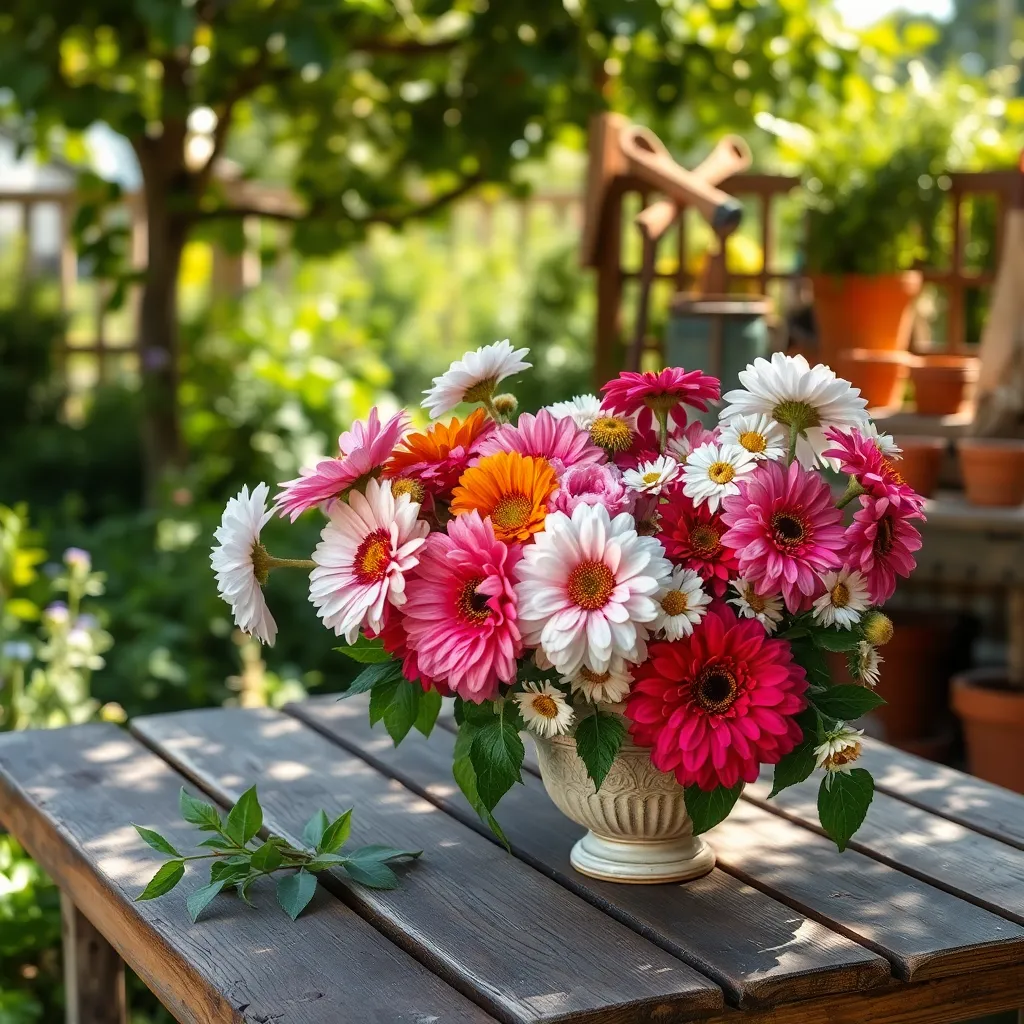
Creating stunning flower displays starts with selecting the right flowers. Choose a mix of thrillers, fillers, and spillers to add depth and interest to your arrangement.
Consider the color palette to ensure that your display is cohesive and visually appealing. Opt for colors that complement each other, such as pairing bold reds with soft whites or vibrant purples with calming greens.
Pay attention to the height and shape of your flowers to create dynamic arrangements. Varying heights can add movement and draw the eye through the display, while a mix of shapes will keep things interesting.
For a fresh and long-lasting arrangement, make sure to remove any leaves that will be submerged in water, as this prevents decay. Regularly change the water and trim the stems at a diagonal every few days to maximize water uptake.
Experiment with different containers to find the perfect match for your flowers. A wide-mouthed vase works well for fuller bouquets, while a tall, narrow container is ideal for displaying long-stemmed blooms.
Advanced gardeners can try incorporating seasonal foliage or branches to add texture and a natural touch. Using greenery from your own garden not only enhances your display but also provides a personal connection to your arrangement.
Color Combinations and Balance
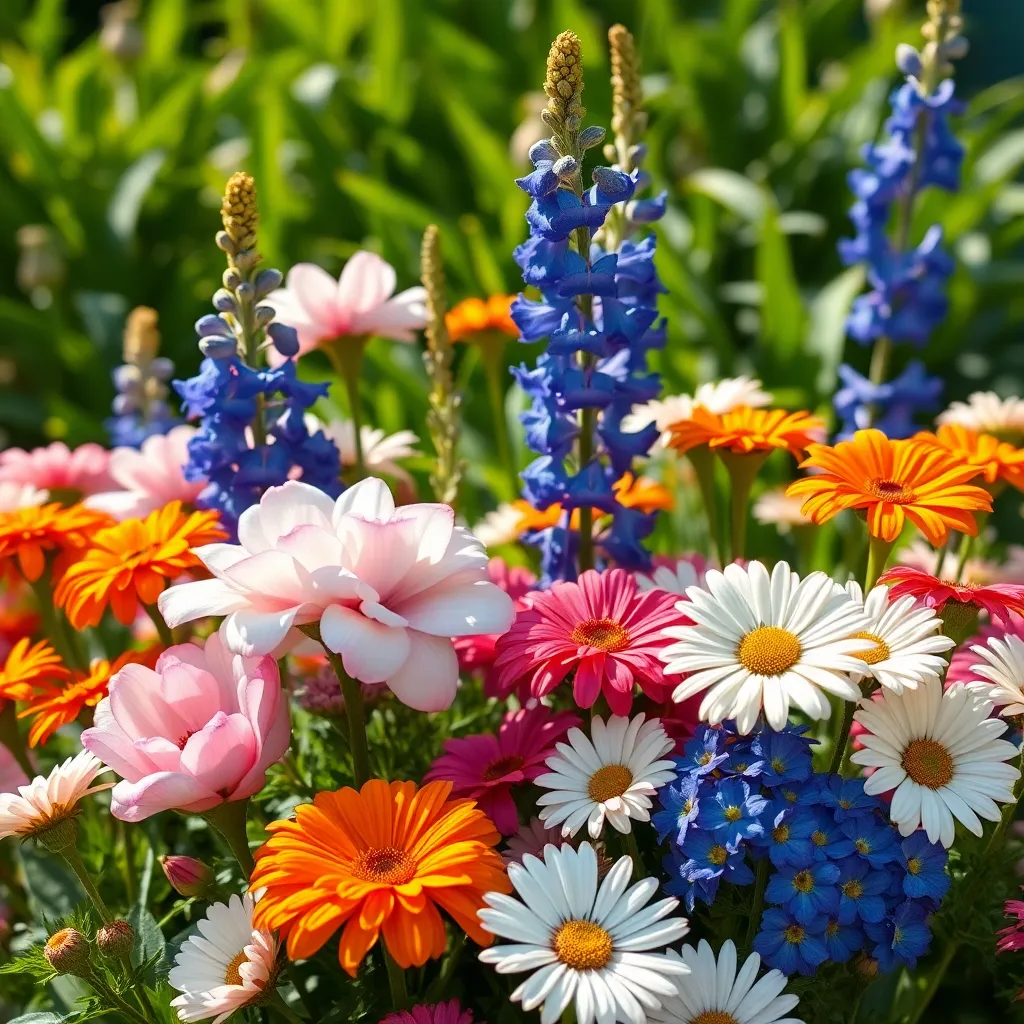
Creating a beautiful flower arrangement begins with understanding color combinations and balance. Start by selecting a primary color as your focal point, which can be highlighted with complementary or analogous colors for visual harmony.
Consider using the color wheel to guide your choices; complementary colors are opposite each other, creating a striking contrast, while analogous colors sit next to each other, offering a more harmonious look. For example, pairing blue with orange or yellow with green can create stunning effects.
Incorporate a variety of textures and shapes to add depth to your arrangement. Use flowers with different petal shapes, such as spiky delphiniums alongside rounded peonies, to create a visually interesting display.
Balance is crucial not only in color but also in the overall composition. Place larger blooms at the center or base, and surround them with smaller, lighter flowers to create a sense of proportion and stability.
For beginners, a simple way to maintain balance is by following the one-third rule: fill one-third of your vase with greenery or foliage, and use the remaining two-thirds for your flowers. This ensures the colors and sizes are evenly distributed for a professional look.
Advanced gardeners might experiment with asymmetrical designs by using a variety of stem lengths and angles. This technique adds a modern, dynamic flair to your arrangements and can make your display more engaging.
Remember to choose flowers suited to your growing conditions; for instance, sun-loving plants like marigolds and zinnias thrive in bright spots, while hostas and impatiens prefer shaded areas. Paying attention to these details ensures your arrangements not only look good but last longer.
Caring for Your Flower Arrangements
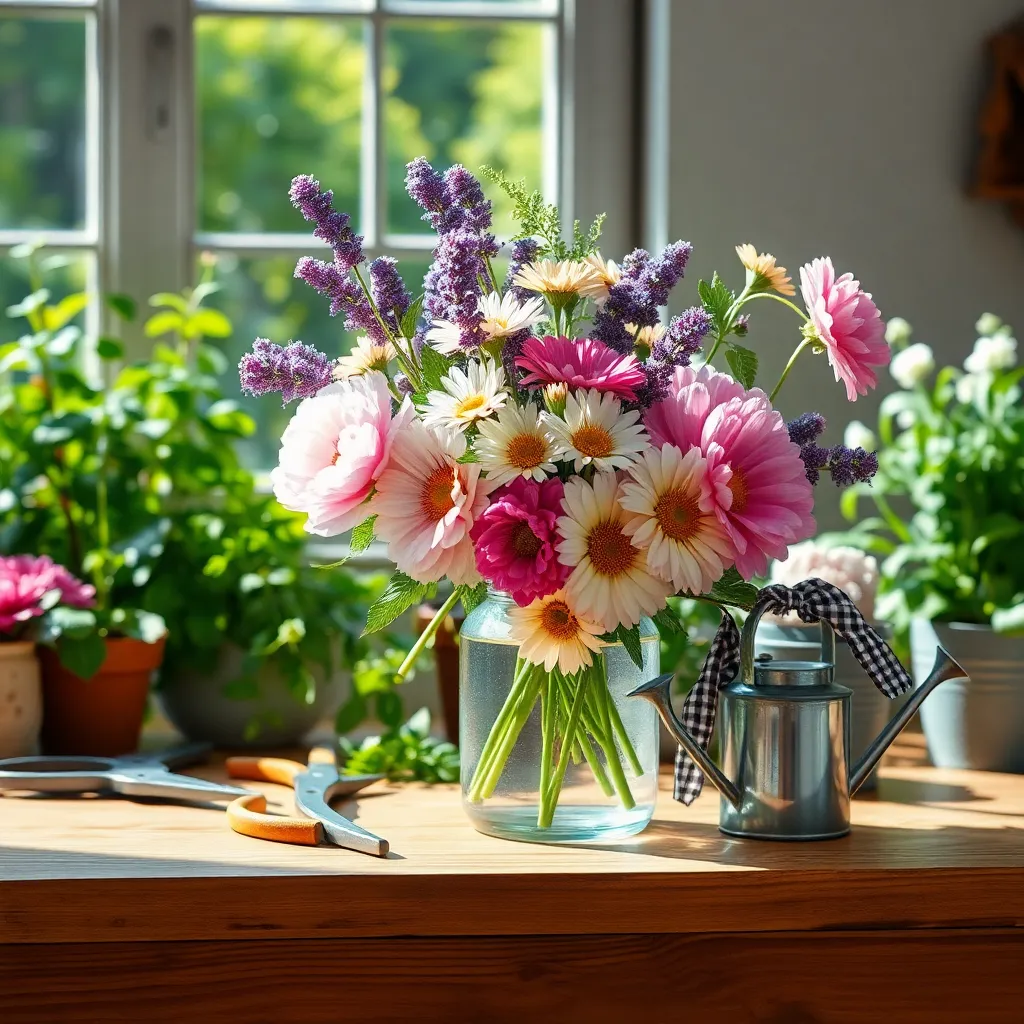
Proper care for your flower arrangements begins with choosing the right vase and maintaining the correct water level. Always use a clean vase and fill it with about two-thirds of fresh, lukewarm water to help your flowers absorb water more efficiently.
To keep your arrangements vibrant, consider adding flower food or a homemade solution. Mix a few drops of bleach, a teaspoon of sugar, and a teaspoon of vinegar into the water to nourish the flowers and inhibit bacterial growth.
Changing the water every two to three days is crucial to maintaining the longevity of your arrangement. Each time you change the water, trim the flower stems by about half an inch at a diagonal angle to ensure optimal water absorption.
It’s essential to monitor the temperature and light conditions of the room where your arrangement is placed. Avoid placing your flowers in direct sunlight or near heat sources, as these conditions can cause them to wilt prematurely.
For an added touch of care, regularly check for any wilting or dead flowers and remove them promptly. This practice not only keeps your arrangement looking fresh but also prevents the spread of decay to other blooms, ensuring the overall health of your display.
Advanced gardeners might experiment with different kinds of water for specific types of flowers. For instance, acidic water benefits roses, while alkaline water can be better for certain tropical flowers, enhancing their natural colors and extending their shelf life.
Conclusion: Growing Success with These Plants
In exploring the art of flower arrangements, we’ve uncovered five key relationship concepts that can transform your connections: the importance of balance, the beauty in diversity, the power of small gestures, the need for regular nurturing, and the art of patience and growth. Each of these principles mirrors the delicate yet vibrant dynamics of relationships, reminding us that, like flowers, they require care and intention to flourish.
As an actionable step, I encourage you to pick one concept that resonates most with you and apply it to a relationship in your life today. Whether it’s embracing diversity by appreciating differences or nurturing growth through thoughtful communication, your efforts can spark meaningful change.
Remember, this article is your go-to guide for cultivating blooming relationships. Save or bookmark it now, ensuring you have these insights at your fingertips whenever you need a gentle reminder or a fresh perspective.
Looking ahead, envision your relationships thriving, with each interaction as vibrant and harmonious as a well-composed bouquet. With intention and care, you have the power to nurture and grow connections that are as beautiful and resilient as any floral masterpiece.

